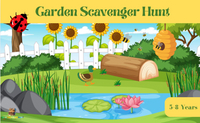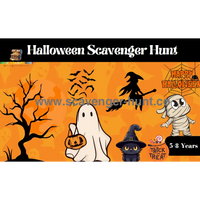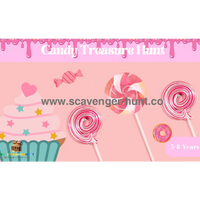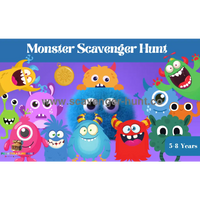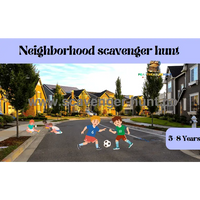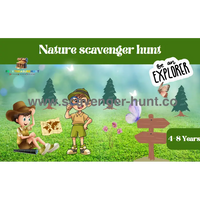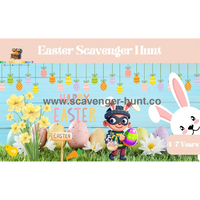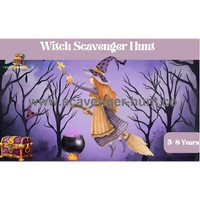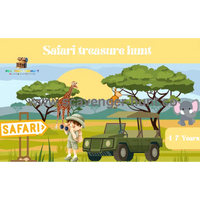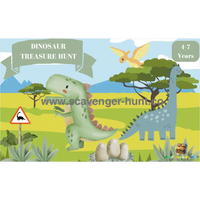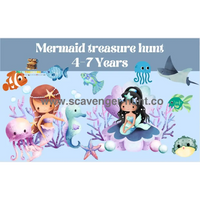The world is a magnificent rainbow waiting to be discovered! Teaching children about colors is one of the most joyful and fundamental aspects of early childhood education. Colors are everywhere around us, making every moment a potential learning opportunity. Whether you're a parent, caregiver, or educator, turning color recognition into an exciting adventure will help children develop crucial cognitive skills while having an absolute blast.
Why Color Learning Matters More Than You Think
Learning colors isn't just about naming red, blue, and yellow. Color recognition serves as a foundation for numerous developmental milestones that will benefit children throughout their lives.
Cognitive Development Benefits
Color learning enhances brain development by strengthening neural pathways responsible for visual processing, memory formation, and categorization skills. When children learn to distinguish between colors, they're actually developing critical thinking abilities that will help them organize and understand their world.
Language and Communication Skills
Colors provide rich vocabulary expansion opportunities. Children learn descriptive words, comparisons, and develop the ability to communicate more precisely about their environment. This linguistic development forms the groundwork for advanced communication skills.
Academic Preparation
Color recognition directly supports future academic success. From reading color-coded charts to understanding mathematical concepts through visual representation, colors serve as learning tools across all subjects.
Creative Expression and Emotional Development
Colors help children express emotions, preferences, and creativity. Understanding colors empowers them to make artistic choices and communicate feelings through their creative work.
Age-Appropriate Color Learning Milestones
Infants (0-12 months)
Babies begin distinguishing high-contrast colors around 3-4 months old. Black, white, and red are typically the first colors they can differentiate.
What to Expect:
- Interest in bold, contrasting patterns
- Preference for bright, primary colors
- Visual tracking of colorful moving objects
- Reaching for colorful toys and objects
Toddlers (1-2 years)
This is when active color exploration begins. Toddlers start showing preferences and can begin simple color matching activities.
Development Indicators:
- Pointing to favorite colored objects
- Attempting to name some colors (often incorrectly)
- Enjoying color-sorting play
- Showing clear color preferences
Preschoolers (3-4 years)
Major breakthroughs happen during this stage. Children can typically name primary colors and begin understanding color relationships.
Milestone Achievements:
- Correctly naming red, blue, yellow, and green
- Simple color matching and sorting
- Understanding "same" and "different" with colors
- Beginning to mix colors during art activities
School-Age (5+ years)
Advanced color understanding develops, including secondary colors, shades, and color mixing concepts.
Advanced Skills:
- Naming 8-10 colors consistently
- Understanding color mixing (red + yellow = orange)
- Recognizing different shades of the same color
- Using colors descriptively in conversation
Creating a Color-Rich Home Environment
Strategic Color Placement
Transform your living space into a natural color-learning laboratory by thoughtfully incorporating colors throughout your home.
Living Room Learning:
- Colorful throw pillows with solid colors
- Picture books displayed with vibrant covers
- Art supplies easily accessible in clear containers
- Educational color posters at child eye-level
- Colorful rugs that invite floor play
Kitchen Color Connections:
- Colored plates, cups, and utensils for meals
- Fresh fruits and vegetables displayed prominently
- Colorful kitchen towels and accessories
- Magnetic letters and numbers on the refrigerator
- Color-coded containers for snacks and supplies
Bedroom Color Sanctuaries:
- Bedding in primary or favorite colors
- Colorful nightlights for comfort
- Art displays featuring children's colorful creations
- Organized toy storage by color groups
- Color-themed reading corners
Bathroom Bright Spots:
- Colorful towels and washcloths
- Bath toys in various colors
- Toothbrushes in different family member colors
- Colorful soap dispensers and accessories
- Non-slip bath mats in bright colors
Fun Indoor Color Games and Activities
Color Scavenger Hunts
Turn your home into an exciting treasure hunting ground focused on color discovery.
Basic Color Hunt: Give children a specific color to find throughout the house. Start with one color and gradually increase to multiple colors. Create simple checklists with pictures for non-readers.
Advanced Color Challenges:
- Find items in two different shades of the same color
- Locate something that's primarily one color but has accents of another
- Hunt for items that match specific color combinations
- Time-based challenges for older children
Color Sorting Extravaganzas
Sorting activities develop organizational skills while reinforcing color recognition.
Household Item Sorting:
- Socks by color during laundry folding
- Toys into colored containers or baskets
- Crayons and markers by color families
- Books with predominantly colored covers
- Kitchen items like plastic containers and utensils
Creative Sorting Games:
- M&Ms or Skittles by color (great snack motivation!)
- Pasta shapes painted in different colors
- Colored paper squares cut from magazines
- Natural items like leaves, flowers, and stones
- Fabric scraps from craft projects
Color Matching Memory Games
Develop memory skills while reinforcing color recognition through engaging matching activities.
DIY Memory Cards: Create simple matching cards using colored paper, stickers, or printed images. Start with 4-6 color pairs and gradually increase difficulty.
Household Memory Games:
- Match colored socks to their pairs
- Find items that match colored paper samples
- Memory games using colored building blocks
- Matching games with colored cups and balls
- Picture matching with colorful photographs
Interactive Color Cooking
The kitchen provides incredible opportunities for hands-on color learning through food preparation.
Colorful Cooking Projects:
- Rainbow fruit salads with discussions about each color
- Colored pasta using food coloring
- Layered smoothies showing color blending
- Decorated cookies with colored frosting
- Vegetable sorting by color during meal prep
Color Mixing Experiments:
- Mixing colored frosting to create new colors
- Layering colored ingredients in clear containers
- Creating colorful ice cubes with food coloring
- Blending fruits to show color changes
- Making colored play dough from scratch
Creative Art Projects for Color Learning
Painting Adventures
Art activities provide unlimited opportunities for color exploration and creativity.
Basic Painting Projects:
- Finger painting with primary colors
- Watercolor experiments showing color blending
- Sponge painting with different colored paints
- Cotton ball painting for texture and color
- Brush painting focusing on one color at a time
Advanced Color Art:
- Color wheel creation using paints
- Gradient paintings showing color transitions
- Color mixing charts and documentation
- Nature painting using found objects as brushes
- Abstract art focusing on color relationships
Craft Projects with Color Focus
Hands-on crafting reinforces color learning through tactile experiences.
Simple Color Crafts:
- Colored paper collages
- Tissue paper sun catchers
- Colored pasta jewelry
- Construction paper mosaics
- Colored rice sensory bins
Complex Color Projects:
- Rainbow wind chimes using colored materials
- Color-themed scrapbook pages
- Tie-dye projects showing color mixing
- Colored salt layering in clear containers
- Mixed media art using various colored materials
Sensory Color Experiences
Engage multiple senses to reinforce color learning through rich sensory experiences.
Tactile Color Learning:
- Colored play dough exploration
- Textured color books with fabric samples
- Colored rice or beans in sensory tables
- Water play with colored water and containers
- Sand play with colored sand mixtures
Multi-Sensory Activities:
- Color-themed music and movement games
- Scented play dough in different colors
- Taste-testing foods of specific colors
- Sound games associated with specific colors
- Temperature play with colored ice and warm water
Educational Color Games That Work
Color Bingo
Create engaging bingo games that make color recognition exciting and social.
Simple Color Bingo: Use basic color squares for younger children. Call out colors and have children place markers on matching squares.
Advanced Color Bingo: Include color names, objects of specific colors, or color mixing combinations for older children.
Color Memory and Concentration
Develop memory skills while reinforcing color knowledge through strategic games.
Classic Memory Games: Use colored cards or objects for traditional memory matching games with color-focused rules.
Color Sequence Games: Create patterns using colored objects and have children replicate or continue the sequences.
Musical Color Games
Combine music and movement with color learning for active, engaging experiences.
Color Freeze Dance: Play music and have children dance. When music stops, call out a color and children must touch something of that color.
Color Musical Chairs: Set up chairs with colored paper attached. Call out colors instead of stopping music.
Color-Based Board Games
Adapt existing games or create new ones focused specifically on color learning.
DIY Color Board Games:
- Color pathway games using colored squares
- Spinner games with color-based actions
- Card games focusing on color matching
- Dice games using colored dice
- Simple racing games with color-coded spaces
Outdoor Color Adventures
Nature Color Hunts
Take color learning outside for fresh air and natural color discovery.
Garden Color Exploration:
- Flower identification by color
- Leaf collection showing color variations
- Rock and stone color sorting
- Bug and insect color observation
- Seasonal color changes documentation
Park and Playground Color Games:
- Equipment color identification and sorting
- Natural vs. man-made color comparisons
- Shadow and light color observations
- Color photography projects
- Outdoor color obstacle courses
Sidewalk Chalk Color Fun
Transform outdoor spaces into colorful learning environments using chalk.
Chalk Color Activities:
- Rainbow drawings and color practice
- Color hopscotch games
- Large-scale color sorting areas
- Color mixing experiments on pavement
- Collaborative neighborhood color murals
Water Color Play
Combine outdoor water play with color learning for summer fun.
Colorful Water Activities:
- Colored water in spray bottles for outdoor painting
- Ice experiments with colored water
- Water table play with colored water and tools
- Garden watering with colored water observations
- Car washing with colored soap solutions
Technology and Color Learning
Educational Apps and Digital Tools
Thoughtfully selected technology can enhance color learning when used appropriately.
Recommended App Features:
- Interactive color matching games
- Virtual coloring books with color recognition
- Color mixing simulation programs
- Photography apps for color identification
- Music apps with color-coordinated activities
Screen Time Balance: Use technology as a supplement to, not replacement for, hands-on color learning experiences.
Digital Documentation
Use technology to document and celebrate color learning progress.
Documentation Ideas:
- Photo journals of color discoveries
- Video recordings of color naming progress
- Digital art portfolios showing color development
- Time-lapse videos of color projects
- Virtual sharing with extended family
Addressing Common Color Learning Challenges
Color Vision Differences
Some children may have difficulty distinguishing certain colors, requiring adapted approaches.
Supportive Strategies:
- Focus on colors children can distinguish clearly
- Use multiple cues beyond color (texture, shape, size)
- Consult with healthcare providers if concerns arise
- Provide additional support without creating anxiety
- Celebrate all progress and individual differences
Developmental Delays
Children develop at different rates, and color learning may come more slowly for some.
Adaptive Approaches:
- Break color learning into smaller steps
- Use repetition and consistent reinforcement
- Provide extra time and patience
- Focus on one color at a time initially
- Celebrate small victories and progress
Lack of Interest
Some children may seem uninterested in color-focused activities.
Engagement Strategies:
- Connect colors to child's existing interests
- Use favorite toys and activities as color learning tools
- Make activities more active and hands-on
- Involve friends or siblings in color games
- Find the child's preferred learning style
Cultural and Global Color Connections
Colors Around the World
Introduce children to how different cultures view and use colors.
Cultural Color Exploration:
- Holiday colors from different traditions
- Traditional clothing colors from various cultures
- Food colors associated with different countries
- Art styles and color preferences globally
- Language differences in color naming
Color Symbolism and Meaning
Age-appropriately introduce the concept that colors can have different meanings.
Simple Color Meanings:
- Red for love, excitement, or stop signs
- Green for nature, go signals, or growth
- Blue for sky, water, or calmness
- Yellow for sunshine, happiness, or caution
Seasonal Color Learning Activities
Spring Color Celebrations
Take advantage of spring's natural color explosion for learning opportunities.
Spring Color Activities:
- Flower garden color identification
- Easter egg dyeing and color mixing
- Spring cleaning color sorting projects
- Nature walk color documentation
- Rain puddle color reflection observations
Summer Color Fun
Utilize summer's bright energy for vibrant color learning experiences.
Summer Color Projects:
- Beach color collecting and sorting
- Ice pop making with natural fruit colors
- Garden color photography projects
- Outdoor color painting with water
- Color-themed picnic planning and preparation
Fall Color Transformations
Autumn provides perfect opportunities to discuss color changes and transitions.
Fall Color Learning:
- Leaf color collection and identification
- Apple color sorting and tasting
- Pumpkin color variations exploration
- Harvest time color discussions
- Halloween color-themed activities
Winter Color Contrasts
Winter's unique color palette offers different learning opportunities.
Winter Color Activities:
- Snow color experiments and observations
- Holiday light color identification
- Indoor color projects during cold weather
- Winter clothing color organization
- Color-themed hot chocolate experiments
Building Color Vocabulary
Basic Color Words
Start with fundamental color vocabulary appropriate for your child's developmental level.
Primary Color Focus: Begin with red, blue, and yellow as these are the foundation for all other colors.
Secondary Color Introduction: Add green, orange, and purple once primary colors are mastered.
Advanced Color Vocabulary: Introduce pink, brown, black, white, and gray as children develop.
Descriptive Color Language
Expand beyond basic color names to include descriptive color vocabulary.
Color Descriptions:
- Light and dark variations
- Bright and dull comparisons
- Warm and cool color categories
- Shiny and matte texture descriptions
- Pattern and solid color differences
Color Action Words
Incorporate action words related to color learning and usage.
Color Action Vocabulary:
- Mix, blend, combine
- Sort, match, group
- Paint, color, draw
- Find, hunt, discover
- Compare, contrast, identify
Assessment and Progress Tracking
Informal Assessment Strategies
Monitor color learning progress through natural, play-based observations.
Observation Techniques:
- Document color naming during regular play
- Note color preferences and choices
- Record color-based problem-solving attempts
- Observe color sorting accuracy
- Track color vocabulary usage in conversation
Celebrating Progress
Recognition and celebration motivate continued learning and build confidence.
Celebration Ideas:
- Create color learning certificates
- Display color artwork prominently
- Share achievements with extended family
- Document progress with photos and videos
- Plan special color-themed celebrations
Setting Realistic Expectations
Every child develops at their own pace, and color learning should be enjoyable, not stressful.
Healthy Expectations:
- Focus on effort and participation over perfection
- Celebrate individual progress rather than comparing to others
- Maintain patience with natural developmental timelines
- Adjust activities to match child's current abilities
- Keep learning fun and pressure-free
Safety Considerations for Color Activities
Art Supply Safety
Ensure all color learning materials are age-appropriate and non-toxic.
Safety Guidelines:
- Choose washable, non-toxic art supplies
- Supervise small children during all art activities
- Provide proper ventilation during painting projects
- Use child-safe scissors and tools
- Store art supplies safely when not in use
Activity Safety
Design color learning activities with safety as the top priority.
General Safety Tips:
- Clear pathways during active color games
- Use soft materials for throwing and catching games
- Ensure adequate lighting for color identification
- Provide appropriate seating and workspace
- Keep activities age-appropriate and supervised
Creating Color Learning Traditions
Daily Color Routines
Incorporate color learning into regular daily activities for consistent reinforcement.
Morning Color Routines:
- Color-coordinated outfit selection
- Breakfast color identification games
- Color weather observations
- Daily color-of-the-day focus
- Morning color stretches and movements
Evening Color Activities:
- Color-themed bedtime stories
- Color reflection discussions about the day
- Color-based cleanup games
- Colored nightlight selections
- Color gratitude expressions
Special Color Celebrations
Create memorable color-focused events that become cherished family traditions.
Color Celebration Ideas:
- Rainbow days with all-color activities
- Color-themed birthday parties
- Seasonal color festivals
- Family color challenges and competitions
- Color appreciation field trips and outings
Conclusion: A World of Color Awaits
Learning colors with children is about so much more than identifying red, blue, and yellow. It's about opening doorways to communication, creativity, organization, and understanding of the beautiful world around us. Every color learning moment is an opportunity to bond, explore, and discover together.
The journey of color learning doesn't have a finish line – it's an ongoing adventure that evolves and grows with your child. From the first moment a baby notices a bright red toy to the sophisticated color discussions of older children, each stage brings new opportunities for wonder and learning.
Remember that the most important ingredient in successful color learning isn't the perfect activity or the most expensive materials – it's your enthusiasm, patience, and willingness to see the world through your child's curious eyes. When you approach color learning with joy and creativity, you're not just teaching about colors; you're nurturing a lifelong love of learning and discovery.
Your home is already filled with color learning opportunities waiting to be discovered. Every meal, every walk, every play session, and every quiet moment together can become a colorful adventure. The rainbow of possibilities is endless, and the journey is just as important as the destination.
What colorful discoveries will you and your child make today? Share your favorite color learning activities and inspire other families to paint their own learning adventures!
May your days be filled with color, your learning be joyful, and your family adventures be brilliantly bright!
Discover our Treasure Hunt Blog.
Discover our Free Treasure Hunt Collection.
Discover our Free Treasure Hunt Collection.





